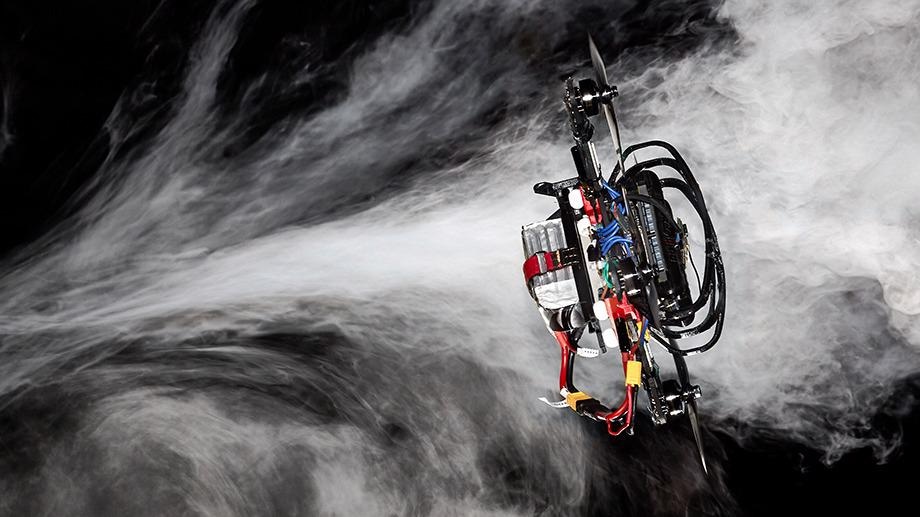In a first of its kind attempt, an autonomous flying quadrotor has outperformed two human pilots in a drone race. The achievement is based on a new algorithm developed by researchers from the University of Zurich (UZH).
 A drone flying through smoke to visualize the complex aerodynamic effects. Image Credit: Robotics and Perception Group, University of Zurich.
A drone flying through smoke to visualize the complex aerodynamic effects. Image Credit: Robotics and Perception Group, University of Zurich.
The algorithm is capable of measuring the time-optimal trajectories that completely consider the limitations of the drone.
The effectiveness of a drone relies on its speed. The drones need to fulfill their task within the available battery life, let it be a building inspection, search for survivors on a disaster site or completing a cargo delivery. They must also perform their task by going through a series of waypoints like windows, rooms, or specific locations, for inspection. The drones must do it by adopting the best trajectory and the correct acceleration or deceleration at each segment.
Algorithm Outperforms Professional Pilots
The best human drone pilots are experts in doing this and have always outperformed autonomous systems in drone racing. A group of researchers from the UZH has now developed an algorithm capable of determining the quickest trajectory to guide a quadrotor — a drone with four propellers — via a series of waypoints on a circuit.
Our drone beat the fastest lap of two world-class human pilots on an experimental race track. The novelty of the algorithm is that it is the first to generate time-optimal trajectories that fully consider the drones’ limitations.
Davide Scaramuzza, Head, Robotics and Perception Group, University of Zurich
Davide Scaramuzza also heads the Rescue Robotics Grand Challenge of the NCCR Robotics, which financially supported the research.
Earlier studies depended on either simplifying the quadrotor system or the description of the flight path, which made them sub-optimal.
The key idea is, rather than assigning sections of the flight path to specific waypoints, that our algorithm just tells the drone to pass through all waypoints, but not how or when to do that.
Philipp Foehn, Study First Author and PhD Student, University of Zurich
External Cameras Provide Position Information in Real-Time
The researchers allowed the algorithm and two human pilots to fly the same quadrotor through a race circuit. External cameras were used to accurately capture the motion of the drones. This was done to give instant information on the autonomous drone to the algorithm, for real-time positioning.
The human pilots were allowed to practice in the circuit, to ensure fair competition. However, the algorithm won. It completed all the laps faster than humans with more consistent performance. This is not surprising as the algorithm can retrace the best trajectory several times, which is not possible by human pilots.
The algorithm must become less computationally demanding before entering commercial applications. This is because the algorithm takes nearly an hour to determine the time-optimal trajectory for the drone.
Also, currently, the drone depends on external cameras to identify the real-time positioning. The researchers are planning to integrate an onboard camera in the future. However, the demonstration proves the ability of autonomous drones to fly faster than human pilots.
“This algorithm can have huge applications in package delivery with drones, inspection, search and rescue, and more,” concluded Scaramuzza.
Journal Reference:
Foehn, P., et al. (2021) Time-optimal planning for quadrotor waypoint flight. Science Robotics. doi.org/10.1126/scirobotics.abh1221.
Source: https://www.uzh.ch/en.html